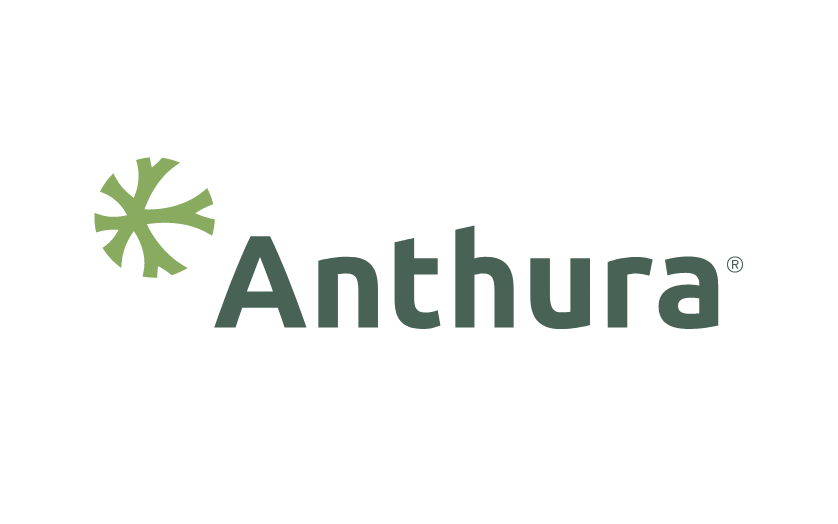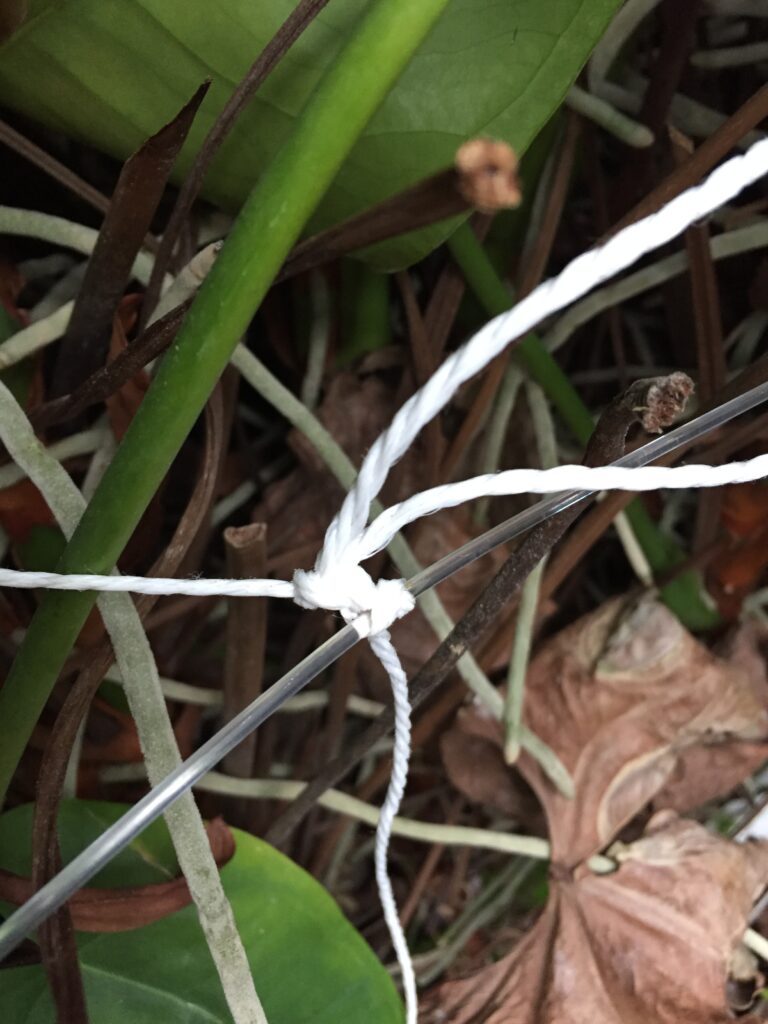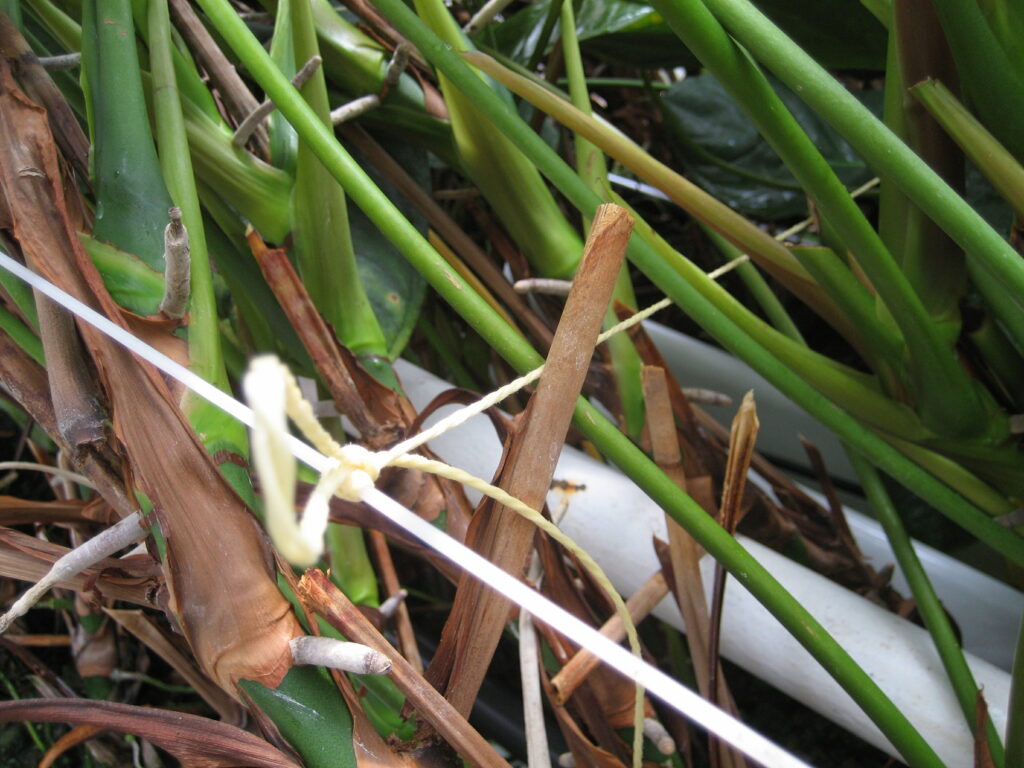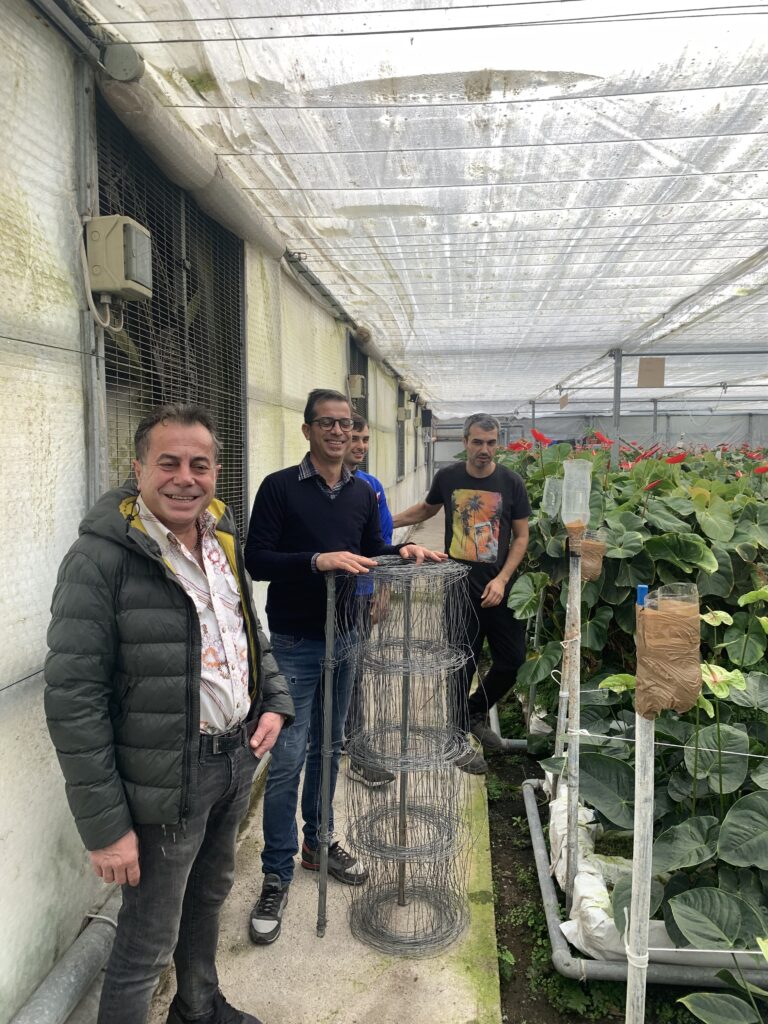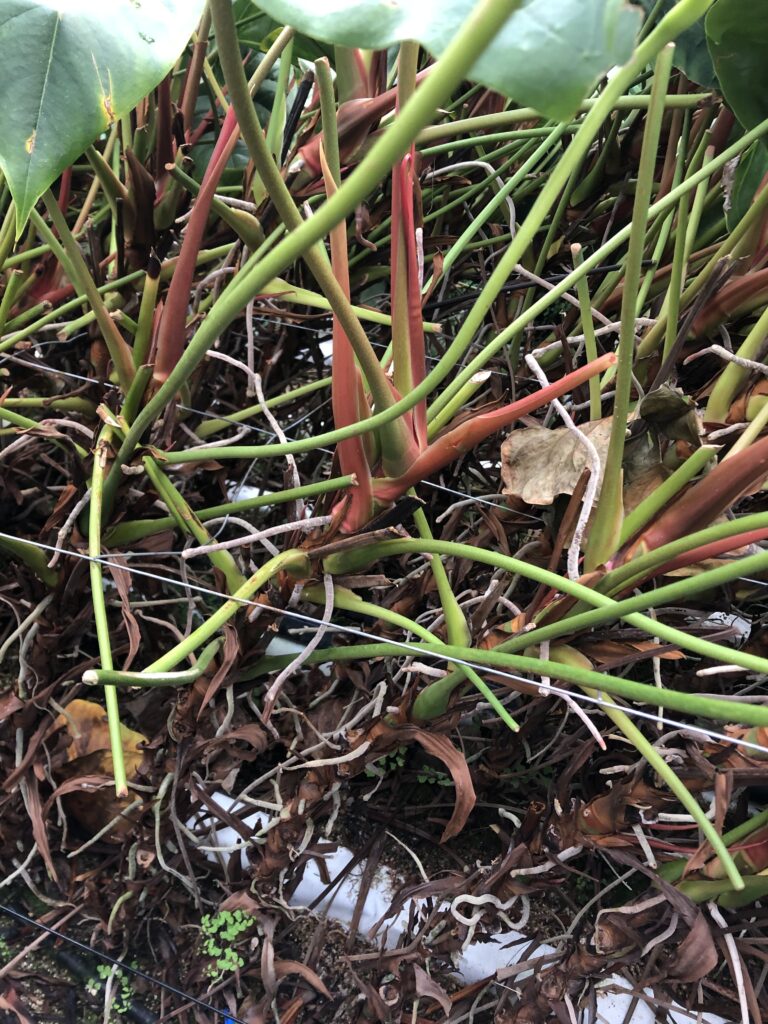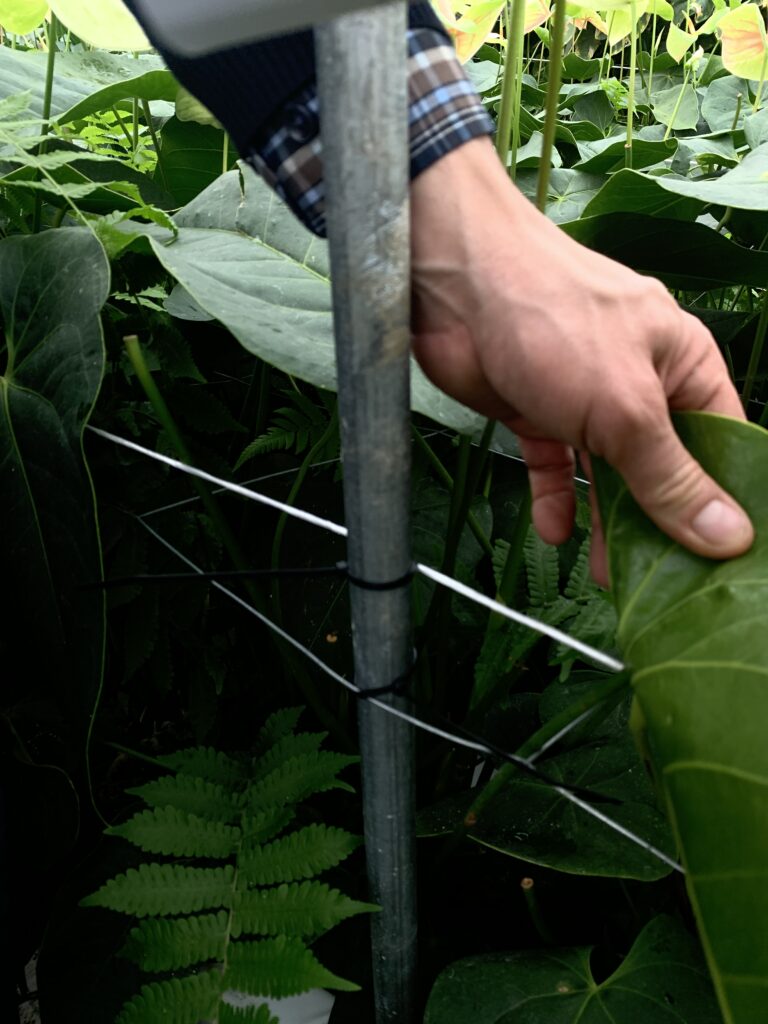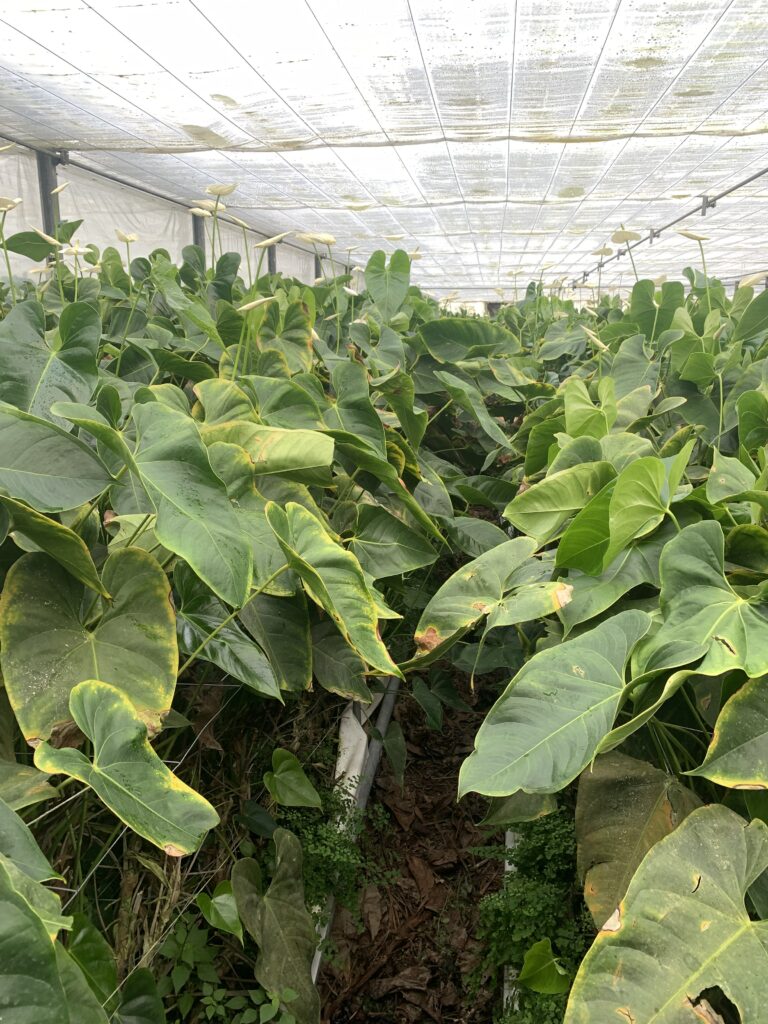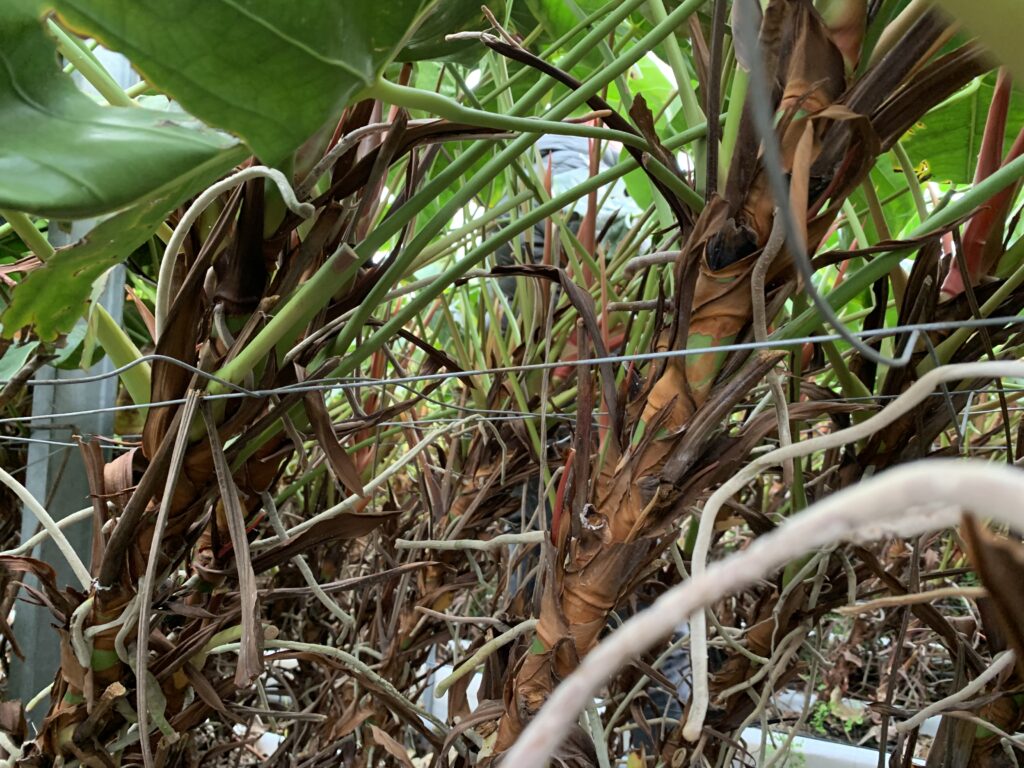Depending on the height and strength of the Anthurium plant, it will start to fall over after two to four years of growth. It is important to supervise the falling process in order to ensure optimal growth and production in the years after the crop has fallen over.
Crops that fall over in an orderly fashion have the following advantages:
- Optimal planting density, thus higher production;
- Easier to work with, so less specialized labour needed;
- Fewer secondary types (flowers of lesser quality), so a higher yield;
- Plants fall less abruptly and therefore experience lower growth reduction;
- Less chance of root problems.
The advantages of training the plant are therefore long lasting and have a major influence on the result of your cultivation. This article describes the different training techniques.
These are:
- Circular repositioning of the plants;
- One-directional training;
- One-directional training with crop wires;
- One-directional training with crop wires and intermediate wires;
- Mesh technique.
Start guiding the falling process
It is important that the plant fall occurs at a time when the plant can easily recover. Therefore, you should avoid a dark or extremely warm growth period. Since after the fall the percentage of secondary types increases temporarily (about two months), it is important to do this in a period that is most convenient for your sales.
It is also important to start with plants that are easy to train. If the crop is still too firm, it will bounce back and the correct result will not be achieved.
There are two possibilities to train the crop with respect to the crop direction:
1) circular repositioning in the bed;
2) training it towards the façade/southwards.
Circular repositioning
The advantage of circular repositioning of the crop is that the bed occupancy of the crop remains optimal. Because the crop is trained in the cutting direction, the plants often already lean in this way. The disadvantage of this method is that the two inner plant rows easily hook into each other, making training more difficult. Circular repositioning is shown in a schematic overview.

Training towards the façade or south (one direction)
With this method, all plant rows are directed towards the façade (fig. A) or towards the south (fig. B). Try not to train towards the main path as this hinders access to the cutting paths with harvesting systems due to the high crop. When trained towards the façade, an open space is created near the path, but this is usually quickly filled again by cutting development. There is often extra space at the façade for the fallen plants. If there is not enough space there, some plants can be removed.
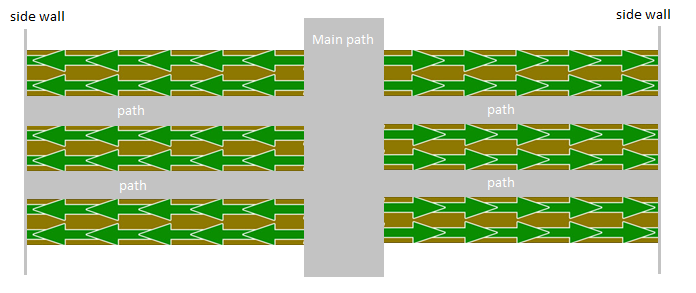
A: Re-positioning of the plants by guiding them towards the façade

B: Guiding the crop southwards
One-directional training with crop wires
This method can also make use of wires that form a right angle to the crop wires. In this way, the crop can be trained, but at the same time kept in position so that it does not bounce back after training. Attach the wires to the crop wires every 1.5-2 metres per stretched bed. Make sure they are securely fastened so that they cannot slide back.
- The right knot ensures that the wires does not shift
- Guiding with the help of crosswires.
One-directional training with crop wire and intermediate wire
If the whole bed is sent in one direction, an intermediate wire can also be installed. This wire is the same as the crop wire in the walkway, but is located in the middle of the bed. The intermediate wire prevents plants from falling to the other side of the bed. These so-called ‘deviating plants’ strongly disrupt the structure of the crop, resulting in extra labour, more secondary types, and lower production.
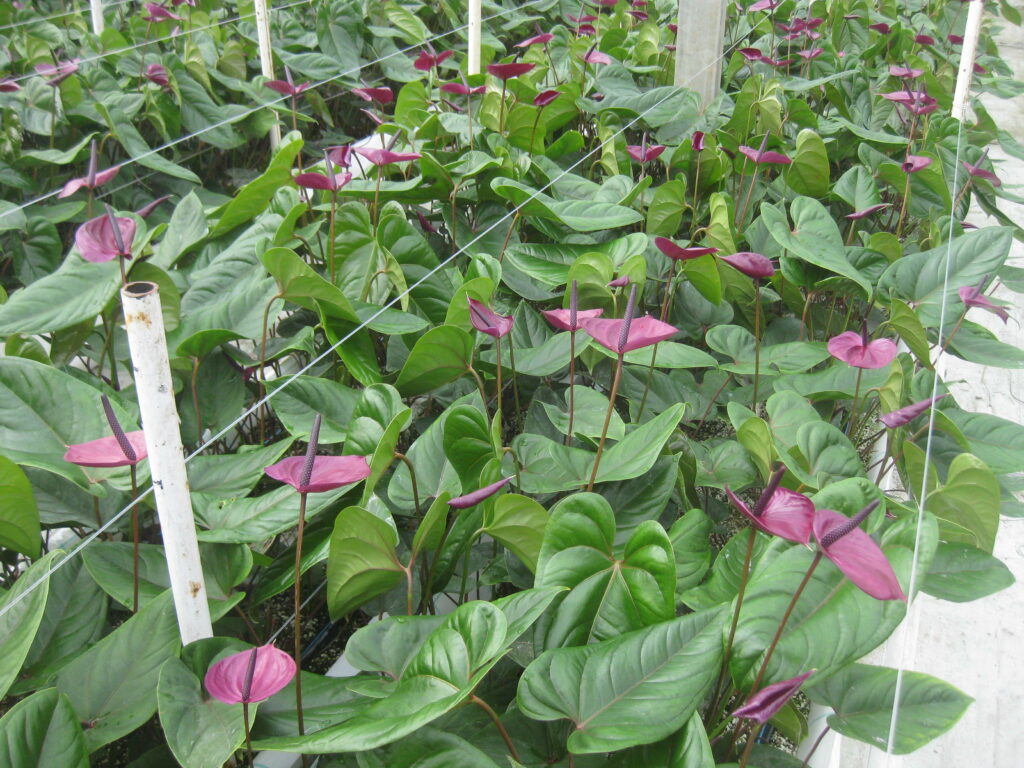
Intermediate wire
Crop training technique without using mesh
1) Make sure there is room for the crop to be trained. This usually means that round bottom leaves and/or cuttings must be removed before training. Keep at least two leaves per plant at all times;
2) From this point on, go past the crop every two to three weeks to give it a (gentle) push in the right direction. When using wires that are attached crosswise, you can move them up step by step. If this has been done two or three times, then the crop has reached the correct position. The crop will sink further as the growing point grows upwards. This shifts the centre of gravity and helps the crop to sink further;
3) if the plant bounces back after a short period, then more force must be applied. However, you should avoid completely compressing the plant. The recovery of the plant will then take a very long time. This can also cause problems for the roots, because the main stem of the plant suddenly has to bend too much.
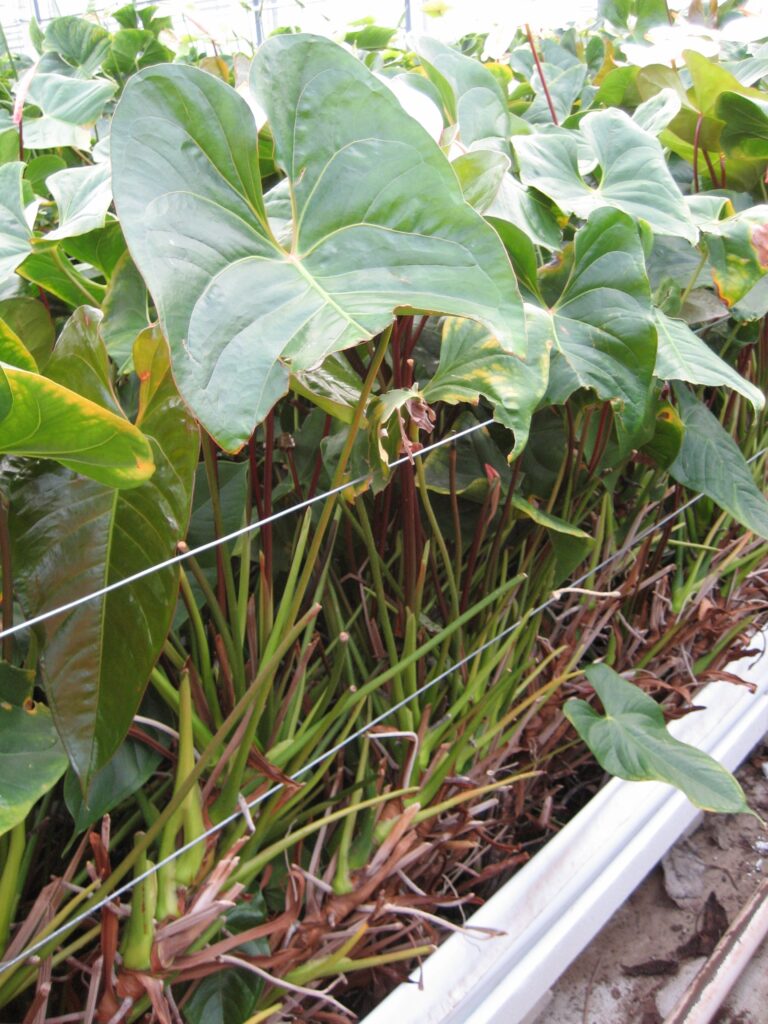
Good result after guiding.

Bad outcome after guiding.
Deviating plants
Extra attention is needed for plants that tend to deviate. This refers to plants that do not remain within the length of the bed, but fall to the left or right towards the plant wires. If nothing is done about these plants, some of them will fall onto the plant wires and the harvest path will become obstructed. It also leaves open spaces in the crop. It is best if two people work on either side of the bed at the same time to deal with deviating plants. The plants can then be properly laid out at the same time. This action will have to be repeated at least once for a good result. Deviating plants can be prevented by working with a intermediate wire.
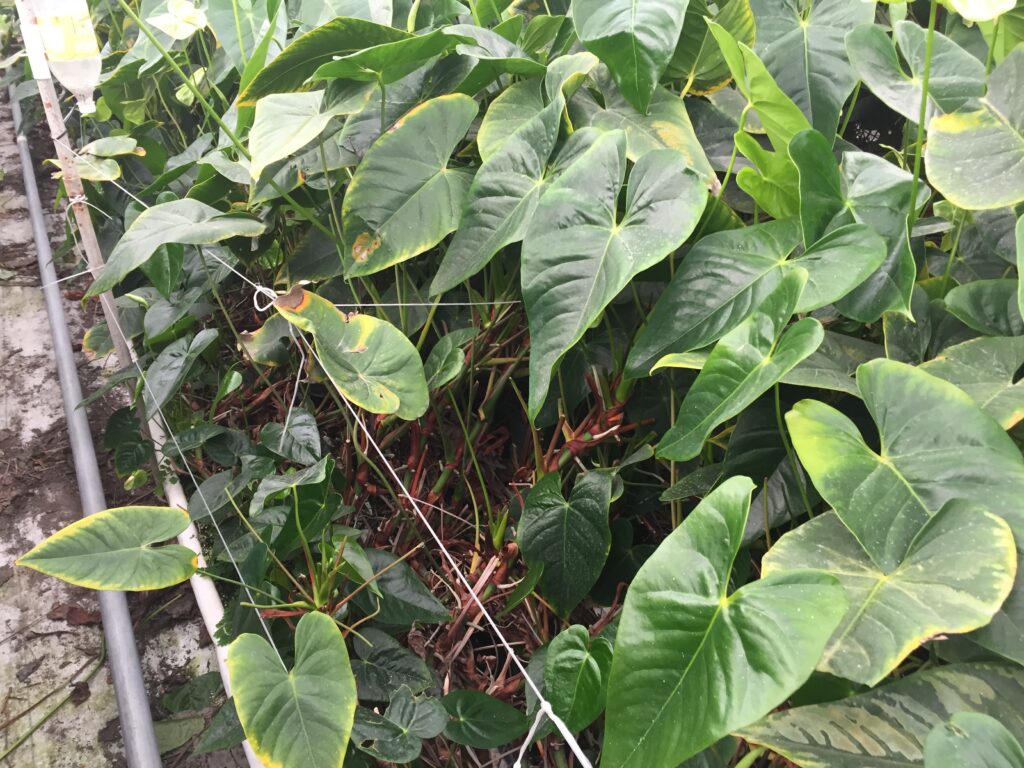
Deviating plants
Points for attention after training
The crop temporarily uses considerably less water and a reduction of 30%-50% can be achieved. This is because the position of the leaves is no longer correct. The leaves will take a few weeks to grow back towards the light. Evaporation will return to normal.
When using young leaf breaking, you must stop this three weeks before the start of training. The new leaves can then grow directly along with the new position of the plant. Do not replace new leaves any earlier as this will cause too much damage.
New – Somma Guiding System (SGS), mesh technology from Paulo Somma (Italy)
Our customer Somma from Italy has its own technique, the Somma Guiding System, which is very successful. During a visit to Italy, Hans Prins (Account Manager Anthurium) and Andre Lont (Crop Specialist Anthurium) talked with Somma about this system.
Somma grows cut Anthurium and seven years ago Paulo Somma first started to install 2.5mm thick netting with 30×30 cm meshes. He has now opted for 3 mm thick mesh, because there is a lot of tension in the mesh when it is rolled up. The way it works is that you roll up the mesh a little bit at a time during the cultivation. Each year, Paulo rolls up the mesh about 20 cm.
- Mesh in the crop
- Insert gauze
- Insert gauze
Paulo Somma: “This is done by feel and you will see when it’s time to roll up. In this way, you give the entire crop support and you can gradually make it grow in one direction. This ensures that the crop is always at the right height for the employees. We have an average of two plants per mesh and always the ideal distribution. The oldest crop now has two nets in the bed, as the oldest net moves down with the crop over time.”
- Mesh in the crop
- Attachment to crop pole
- Mesh in the crop Lucardi
The method is to drive extra-strong iron stakes at the head of the bed which are preferably fixed to the concrete. In the paths, just as in regular cultivation, there will also be poles, including crop wires. Somma usually plants in the spring and after half a year of cultivation they start “young leaf breaking”. In January of the new year, they let new leaves come through. Just before that, Paulo puts the first net on the crop. This will then be at a height of approximately 70 cm. Paulo continues: ‘You might think that it is better to lay down the net first and then roll it up, but in our experience this is difficult. It gets snagged and you pull plants out of the gutter when you go to retrieve the net.
Four people apply the mesh: two unroll the mesh and two walk behind it to guide the flowers and the buds between the mesh. Flower damage is not so bad this way. The third step is to tighten the mesh, depending on the variety. The fourth and final step is for the net to drop down along with the crop. Sometimes we lift the net a little, but eventually you get to the point where you have to apply a new roll.
- Gauze seen from below the crop
- Nice straight crop position after 5 years of cultivation
Allow for approximately 1.5 metres of additional mesh at the rear. If you’re going to roll, then loosen the mesh on both sides. You also have to fasten/unfasten the netting at the crop poles in the paths respectively. If the crop builds up too much at the front, we take some plants from there and plant them in between at the back of the bed in the cleared area.
- Mesh in the crop Lucardi
- Winding up the gauze
With the above techniques, you can give your cut Anthurium crop optimal training in terms of growth and production. If you have any questions, please contact Andre Lont, Crop Optimization Department.
